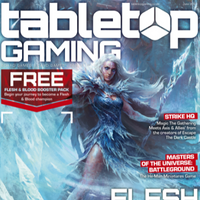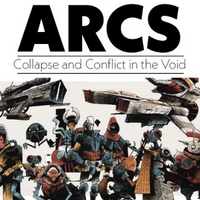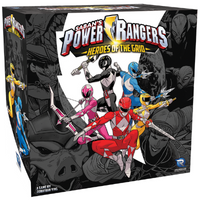28 September 2022
|
Back to basics dungeon crawling
In school I wasn’t particularly fond of maths and was commonly found scrawling dungeon maps across graph paper instead of algebra. Today I will maintain that this is the best use for these gridded columns and rows – transforming a space typically reserved for objective precision into a two-dimensional world of wonder. Games such as Four Against Darkness demonstrate the simple allure of basic dungeon doodling exceptionally, and even games utilising more traditional, tile-based dungeon construction occasionally possess a simplicity designed to stir the imagination. Karak is one such game whose aesthetic simplicity lies only just beyond the most basic graph paper scrawlings – but for its modern, young target audience, is that enough?
Designed by Petr Miksa and Roman Hladik, Karak is a featherweight dungeon-crawler for two to five players. Thematically, players are placed within the crumbling walls of Castle Karak. Descending to its mysterious dungeon, the heroes will be competing to gather the most treasure before someone defeats the dragon and triggers the end of the game. Along the way, the dungeon will be gradually explored, revealing monsters, treasure chests, portals, and healing fountains.
Mechanically Karak is sparse. Essentially players are allowed four moves on their turn which will more often than not be interrupted by the need to draw a new dungeon tile, fight a monster, heal themselves, or open a treasure chest. Like many dungeon crawl games, exploration and the gradual, creative process of unfurling the game’s map is one of the best parts. Here this is perhaps even more true, largely thanks to the simplicity and speed of players turns. When drawing a tile to add to an adjacent space, any corridors allow for yet another tile to be drawn until a room is revealed. Empty rooms are immediately populated with a monster token from the draw bag and then encountered.

Combat is similarly simple with each monster having a value printed on to be beaten by a roll of a pair of dice. Rolling under will result in players flipping one of their five HP tokens, whilst exceeding the roll allows them to flip the monster token revealing weapons, spells, or keys. Once added to players’ dual-layered boards, weapon tokens will add their printed values to future combat rolls while spell scrolls can be discarded for one-time bonuses and keys discarded to open treasure chests. Once the final dragon is drawn and defeated, players will count up their treasure tokens to determine the winner.
Aesthetically, Karak seems to opt for a less is more approach. Dungeon tiles are largely barren and monochromatic but nonetheless act as an easily navigable canvas for the adventures within. Character and monster design though is bold and bright, providing a focus point for players. The dual-layered player boards provide a clear, basic idea on who a character is and the weapons and spells they wield. Indeed, these boards are more than simply the physically stable, knock-proof components they seem to be, with the cracked, faux-rock aesthetic framing the character and item illustrations giving the appearance of being literally set in stone. As negligible as it may seem, these little details add to the idea of the game as a foundation; a mere launchpad for players’ first steps into role-play.
Admittedly, for adults, the joys of Karak won’t be found in the gameplay, but in watching younger players project their personalities onto the game’s simple framework whilst they navigate their first adventures. And in this case, that’s enough.
CHAD WILKINSON
PLAY IT? YES
A bare-bones design that nonetheless captures the imaginations of younger players and paves the way down to deeper dungeons.
TRY THIS IF YOU LIKED CORAQUEST
Karak may be less pretty and imaginative, and more mechanically and narratively sparse, but it still deserves a place in the growing catalogue of entry-level gaming.
Read the full review of CoraQuest here
Designer: Petr Miksa & Roman Hladik
Publisher: Kosmos
Time: 45 minutes
Players: 2-5
Ages: 7+
Price: £20
Looking for more?

This review came from Tabletop Gaming Magazine, which is home to all of the latest and greatest tabletop goodness. Whether you're a board gamer, card gamer, wargamer, RPG player or all of the above, find your copy here.
Get your magazine hereRead More...

If you want to read more about one of the most hotly anticipated games of the year, check out our interview with Cole Wehrle on ARCS! A new game from the designer of Root and Oath, and we've got all you need to know.
To infinity and beyond
Join us in person

We can't wait for Tabletop Gaming Live 2022! An epic weekend in Manchester full of board games, card games, roleplaying games, wargames and more, with amazing exhibitors, great games, and an opportunity to game together in person.
See you there!Treat Yourself!

Have you visited our game store? We have everything from mystery boxes, to games and accessories – including the above Power Rangers: Heroes of the Grid, with a great discount! Head over to find your new favourite game.
Visit the Game Store
Sometimes we may include links to online retailers, from which we might receive a commission if you make a purchase. Affiliate links do not influence editorial coverage and will only be used when covering relevant products







